The ultimate guide to Backpacking Croatia: best tips and tricks
Embark on an epic adventure with our guide to backpacking Croatia! Discover the best tips and tricks for exploring this breathtaking Balkan gem.
10min
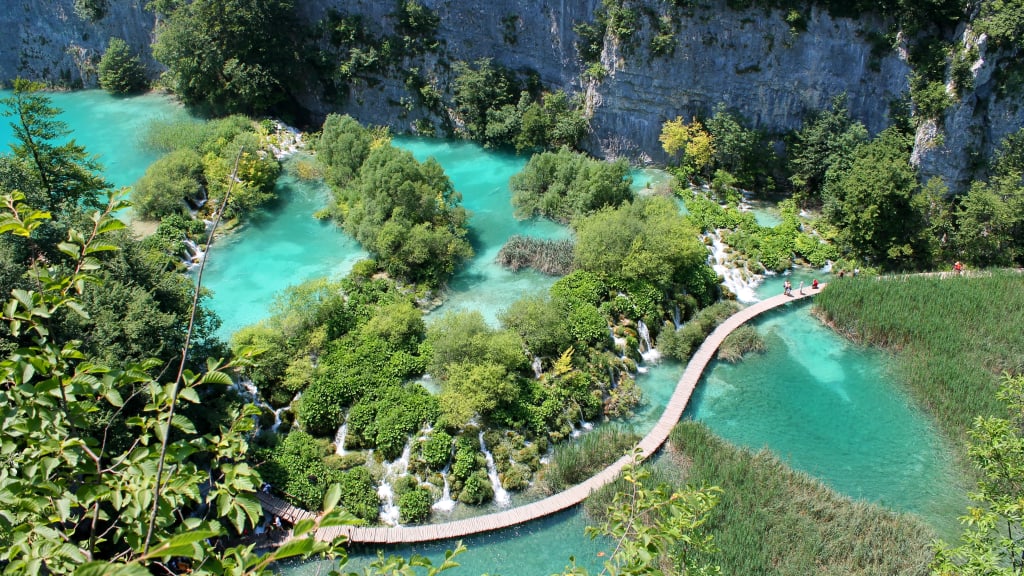
Backpacking Croatia was one of the best experiences I’ve had so far, in many years of traveling around the world. With its stunning coastline, charming medieval towns, and beautiful national parks, the country offers attractions for every type of backpacker.
In this Croatia travel guide, I’ll walk you through the main information you need to explore this Balkan gem to the fullest. Find out the best time to visit Croatia, how to get around, how to save money on accommodation and other costs, top destinations to include in your travel itinerary, and much more.
Are you ready to embark on this journey through picturesque beaches, breathtaking waterfalls and cinematographic towns?
Best time to go backpacking in Croatia
Wondering when is the best time to visit Croatia? When planning a trip there, as always, you should consider the weather and the tourist seasons.
In general, Croatian climate varies between Mediterranean along the coastlines where summers are hot and dry, and winters are mild and wet, while inland regions experience a continental climate, with colder winters.
The high tourist season in Croatia goes from June to August, as in most of Europe. During this time, popular destinations like Dubrovnik, Hvar Island, and Split can get quite crowded. If you want to avoid the crowds but still enjoy good weather conditions, consider visiting during the shoulder seasons of May or September.
I went to Croatia in early September, and it was great: it was still warm enough to go to the beach, but attractions weren't crowded. The only downside was that the partying scene wasn’t so good, but that wasn’t a priority for me.
Speaking of parties, Croatia hosts many events throughout the year, such as music festivals, cultural events, and sports competitions. Check out the calendar of events before your trip.
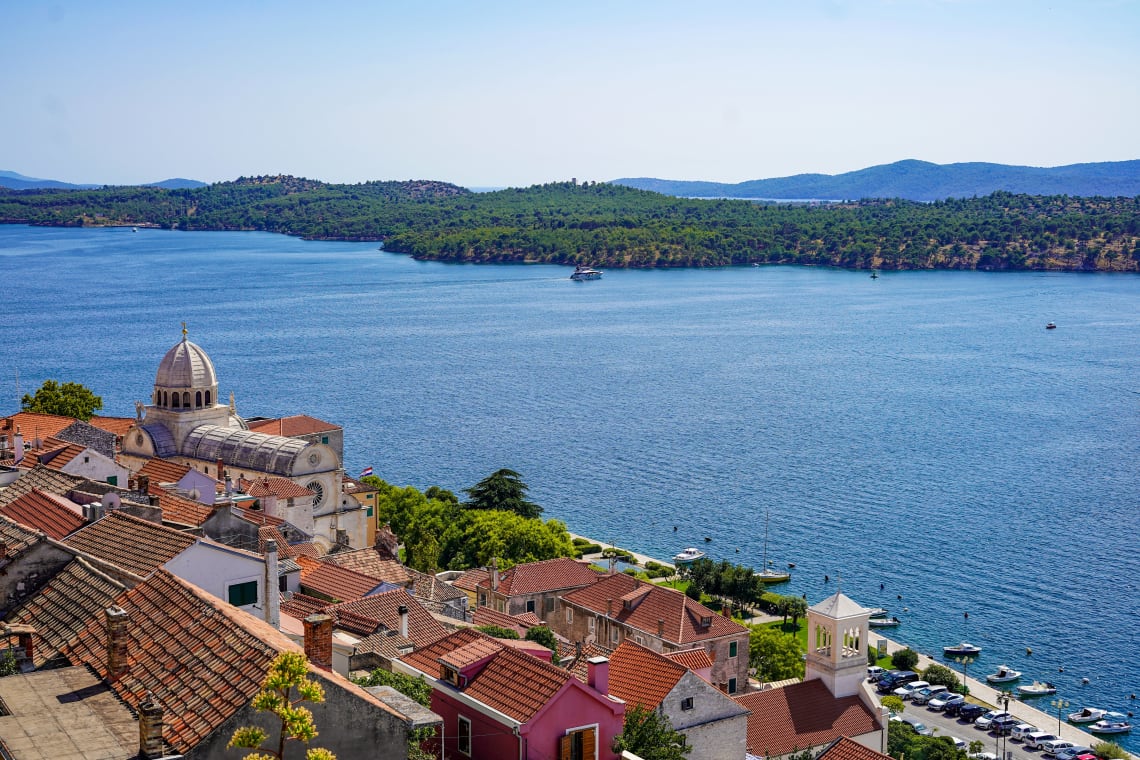
Here’s a breakdown of what each season is like in Croatia:
- Spring (March-May): This is an excellent time to go to Croatia, as temperatures are mild, nature comes alive with blooming flowers, and there are fewer tourists around. However, some attractions may be closed or have limited hours during early spring.
- Summer (June-August): Summer makes the weather perfect for beach days but also attracts large crowds which can make popular destinations feel overcrowded. Prices tend to be higher during peak season too. On the other hand, this is the perfect time for those who love partying.
- Fall (September-November): Fall offers pleasant temperatures ideal for exploring cities like Dubrovnik without breaking a sweat. However, by late fall it might not be warm enough for swimming at beaches anymore.
- Winter (December-February): The winter months can get quite cold in inland areas like Plitvice Lakes National Park but coastal regions remain relatively mild. Nonetheless, many attractions operate on reduced schedules or close entirely during winter.
How to get around Croatia
Getting around Croatia as a backpacker is easy and affordable. Their transport system is efficient. To find out how to go from one destination to another, I suggest using the website Rome2Rio, which shows all available routes by bus, plane, train, ferry etc.
I traveled between cities by bus, either booking tickets online or going to the bus stations in person. You can find routes and pricing information on the website Get By Bus. Usually, the most budget-friendly companies are Flixbus and Arriva.
There are trains in Croatia, but they’re slow and less frequent. You might also consider flying between destinations such as Zagreb, Dubrovnik, Split, Pula and Zadar, if it makes sense within your itinerary and fits your budget.
If you’re going to the islands or coastal towns, you’ll take a few ferries, mostly operated by Jadrolinija. You can use the Croatia Ferries website for routes and prices.
Hitchhiking in Croatia is also a good choice if that’s something you’re used to doing or feel like trying. It’s safe, roads are good and in the most popular routes (especially along the coast) you usually won’t have to wait too long for a ride.
If you want more flexibility, you can also rent a car or a motorbike. This gives you the opportunity to design your own route and discover hidden gems. There are several car rental companies available, and prices vary depending on the type of car and rental period. Be aware that some areas may have narrow roads, and parking in cities can be difficult and expensive.
Within each destination, you’ll be able to see most things by foot, bike or with local buses. The main tourist towns are quite small, but if you can’t or don’t want to walk, there are usually taxis or ride-sharing apps like Uber.
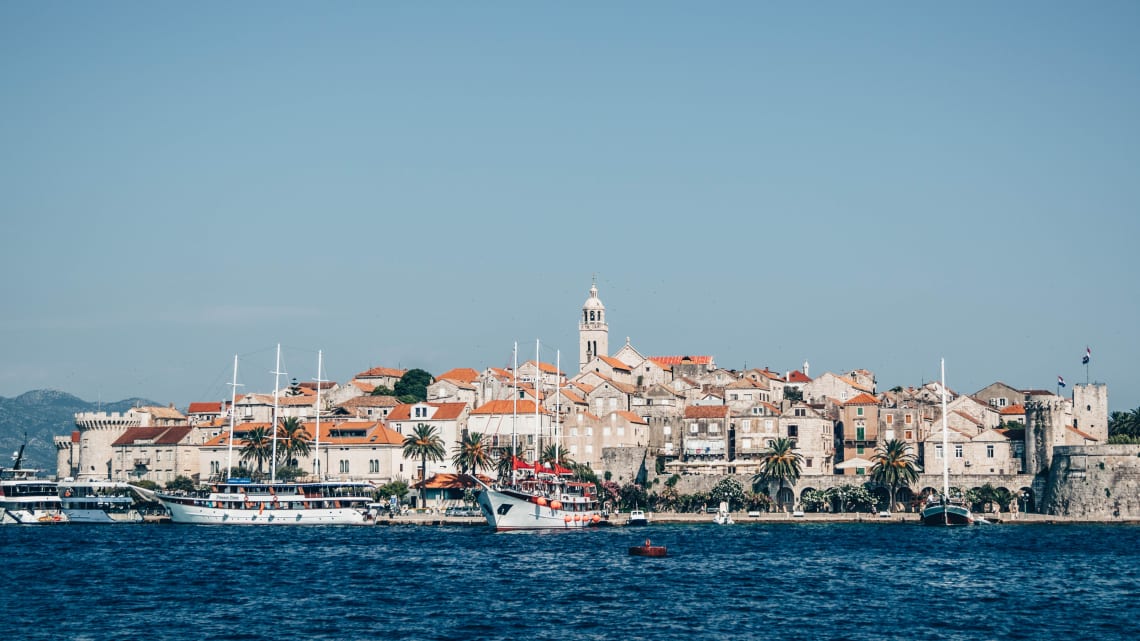
How much does it cost to travel in Croatia?
Backpacking through Croatia can be an affordable experience if you plan your trip wisely. It's always hard to talk about the cost of a trip since it varies so much depending on your priorities and travel style, but I'll give some examples of average costs for accommodation, food, transportation and main tourist attractions for budget travelers.
Accommodation costs for backpackers in Croatia
Croatia offers a variety of accommodation options suitable for travelers on a budget. During the peak summer months (June to August), hostels can offer dorm beds for as little as US$15 per night, with some reaching up to US$30.
During low season (October - April), prices can drop as low as US$10 per night. Budget hotels or apartments will usually cost from US$ 40 to US$ 80 per night.
My special tip is using Worldpackers, where you can volunteer your skills in exchange for free accommodation at hostels or other places like farms, eco lodges and more.
I’ve done this type of work exchange a few times while backpacking in Europe and it was amazing. Besides saving a lot of money, you get to learn different things, meet people from all over the world and experience a deeper immersion in local culture.
There are dozens of cool opportunities to volunteer in Croatia. You can help by welcoming or entertaining guests, painting and decorating, producing digital content, improving websites, farming, gardening and much more.
Check out a few examples:
- Help out in the biggest hostel in Zagreb, Croatia
- Learn about a sustainable life, permaculture and self-sufficiency in Vojnić
- Be a tour leader at a hostel in Hvar
Food costs for backpackers in Croatia
It’s easy to eat delicious Balkan food for little money in Croatia, if you make the right choices. As always, a great way of saving money and eating well is to forget about the touristy restaurants and find out where the locals eat.
- Street food: Croatia has a good street food scene that offers delicious meals at budget-friendly prices. From savory pastries like burek to sweet treats like fritule, there's something for everyone. A burek (pastry filled with cheese or meat) or a cevapi (grilled sausages) costs around US$2-5.
- Grocery stores: If you stay somewhere where you can use the kitchen (at hostels and Worldpackers hosts that’s often the case), cooking your meals allows you to save a lot of money. If you want get more acquainted with local food culture, I strongly suggest you visit local markets. You'll find fresh produce, delicious breads, cheeses, meats and more. Expect to spend about US$20-25 per week on groceries.
- Eating out: If you prefer eating out, look out for konobas - traditional Croatian taverns offering home-cooked meals at affordable prices. A meal in a konoba can cost between US$10 and US$15, while a mid-range restaurant will charge from US$ 20 to US$ 40 for a meal.
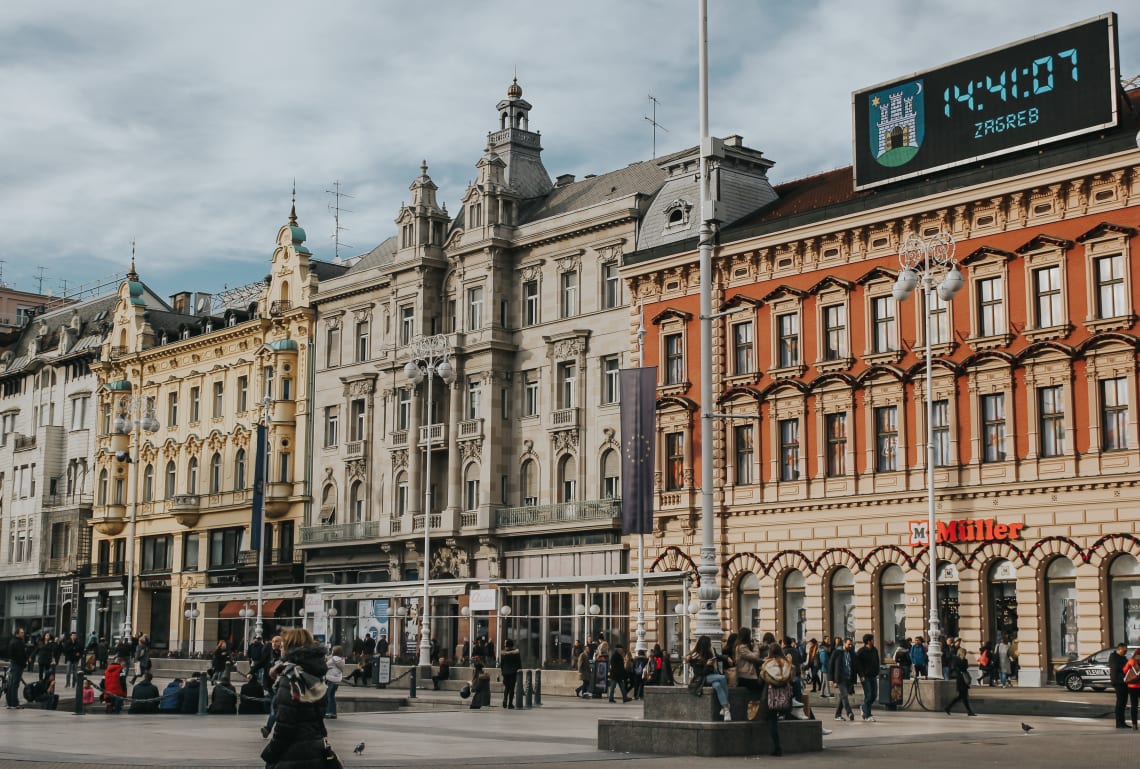
Transportation costs for backpackers in Croatia
Public transportation is the most budget-friendly way to get around Croatia. Here are some average costs:
- Buses: Intercity bus tickets usually range from US$10 to US$30, depending on the distance.
- Ferries: Ferries connecting mainland cities with islands like Hvar usually cost between US$5 and US$20 one-way.
- Local buses or trams: expect to pay around US$ 2 per ride.
Costs of main tourist attractions in Croatia
I didn’t spend much money on tourist attractions in Croatia and got to see many amazing places. That’s a backpacker’s dream: finding many free or cheap activities to fill our days.
In this country, simply walking around the historic or coastal towns is super nice, and during warmer months there are free open air concerts, festivals and other events.
Entry to museums and other attractions usually cost from US$ 5 to US$ 15, while the admission to national parks are somewhere between US$ 5 and US$ 40, depending on the park and the season.
Top destinations for backpacking Croatia
Get ready to explore some of the most stunning destinations that make Croatia a backpacker's paradise. From ancient cities with rich history to breathtaking national parks and picturesque islands, there's something for every traveler.
Dubrovnik
Known as the “Pearl of the Adriatic”, Dubrovnik is known for its majestic Medieval fortifications, cobblestone streets and breathtaking views.
No wonder it gets so crowded during peak season: apart from being beautiful, it was a Game of Thrones filming location. It also makes a good base for day trips. From there I went to Mljet National Park and it was stunning.
In the Middle Ages, Dubrovnik was a key hub for trade from the East, and there are plenty of traces of this history to be seen. Be sure to walk its ancient walls, get lost in its maze of little side streets and watch the sunset.
If you’re a fan of Game of Thrones, there are plenty of tours that take you to the most famous sites. But I recommend doing a free walking tour and talking to locals to get more from it than picturesque sceneries and tourist restaurants.
The best way to save money and find out off the beaten-path locations in Dubrovnik is to do a volunteer program there.
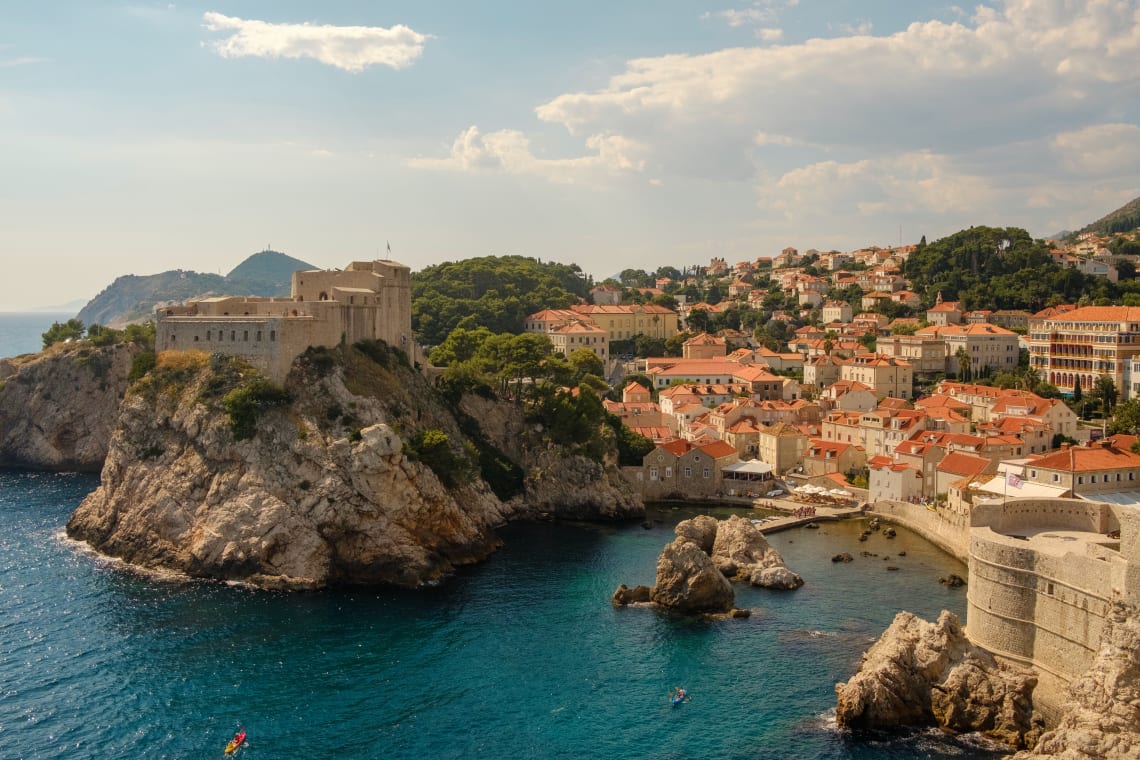
Plitvice Lakes National Park
One of the highlights of Croatia, Plitvice Lakes National Park is a UNESCO World Heritage Site. I couldn’t make it there because the weather was awful, but that’s definitely a good reason to return!
Plitvice is composed of 16 interconnected lakes surrounded by lush forests and cascading waterfalls. You can’t swim in them, since it’s a protected area, but they are surely an amazing sight.
The park can be visited on a day trip. If you go there in the Summer, plan to arrive early, since it can get quite crowded.
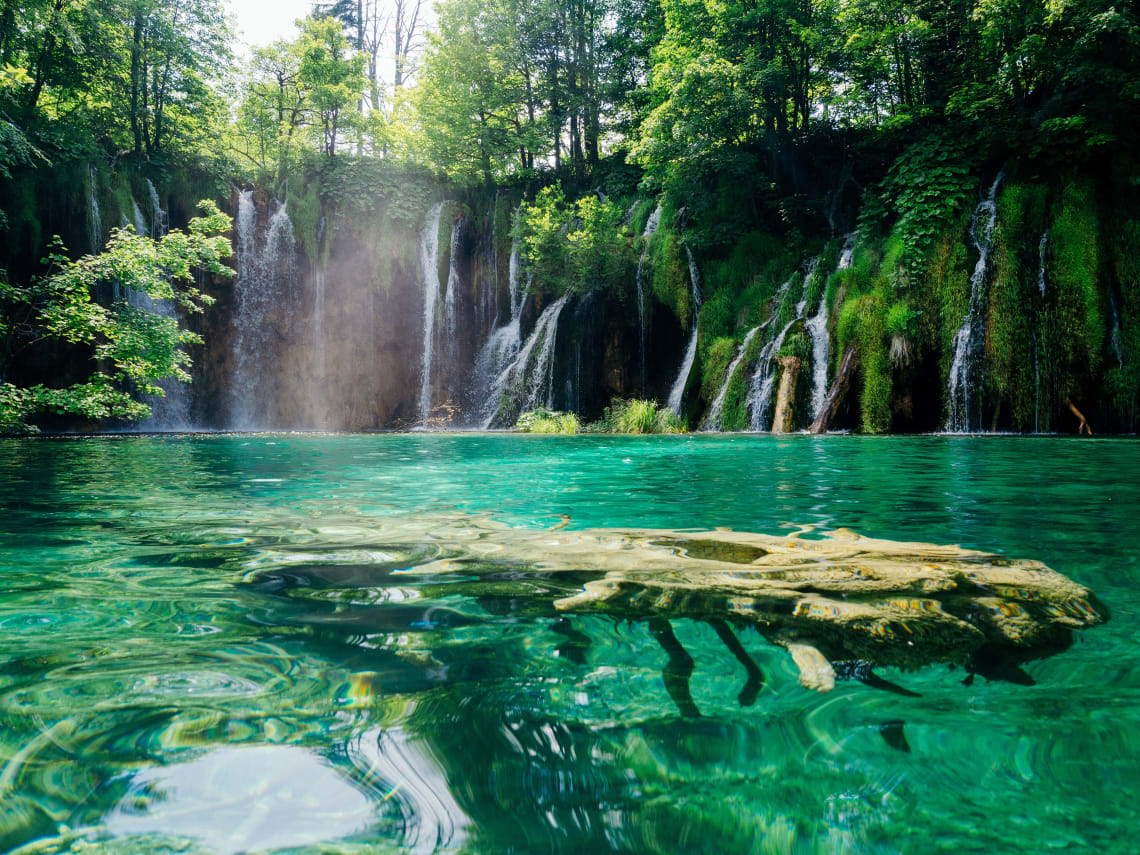
Hvar Island
One of the highlights of my Croatia backpacking trip was Hvar Island, known for its vibrant nightlife and beautiful beaches. It also offers some nice historical sites, such as the Hvar Fortress and St. Stephen's Cathedral.
Since I was there in mid-September, the partying scene wasn’t as vibrant as it is during summertime. That didn't bother me because I like quieter places, but if you’re looking for the buzz, plan accordingly.
I loved going to the fortifications above town to see the views and renting a cheap boat with people I met at the hostel to go island hopping for a whole day.
Want to visit Hvar with free accommodation? Try volunteering there!
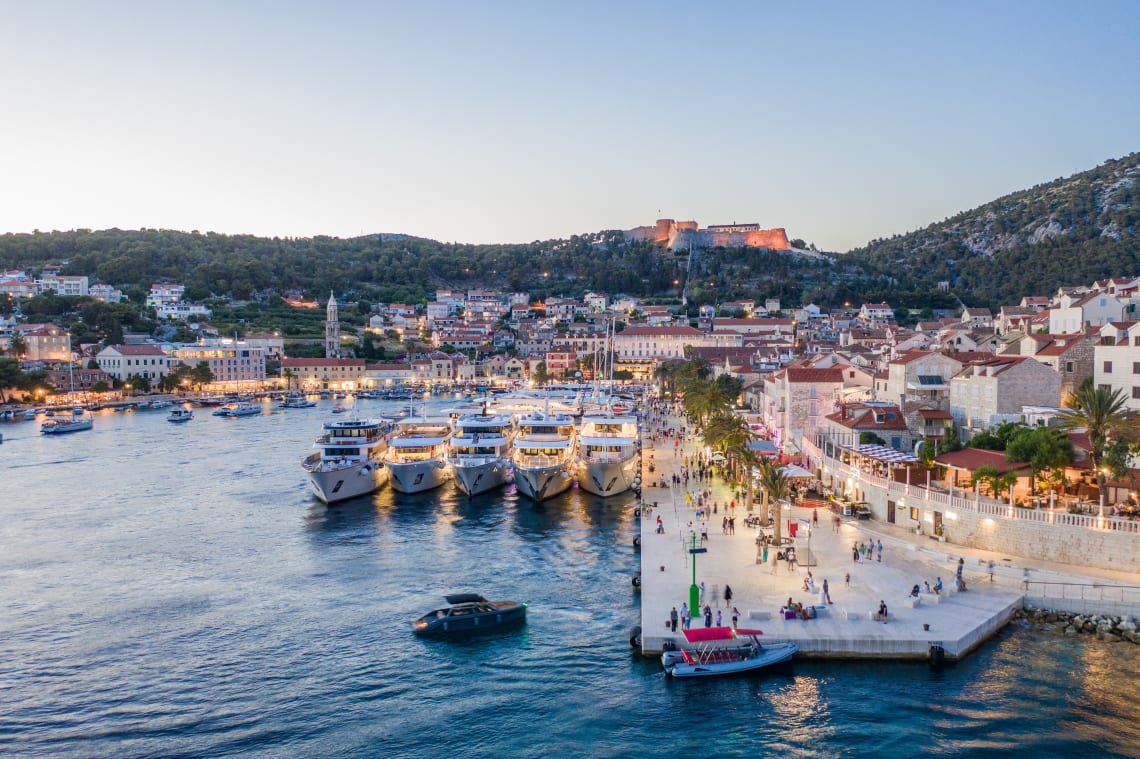
Split
Croatia’s second-largest city, Split is quite charming. At its heart lies Diocletian's Palace, an impressive Roman ruin dating back to the 4th century AD which now houses shops, cafes, and restaurants.
I loved walking around aimlessly and climbing up Marjan Hill for panoramic views of the city and its surrounding islands. The nearby town Trogir is definitely worth a visit.
Check out the Worldpackers opportunities available in Split.
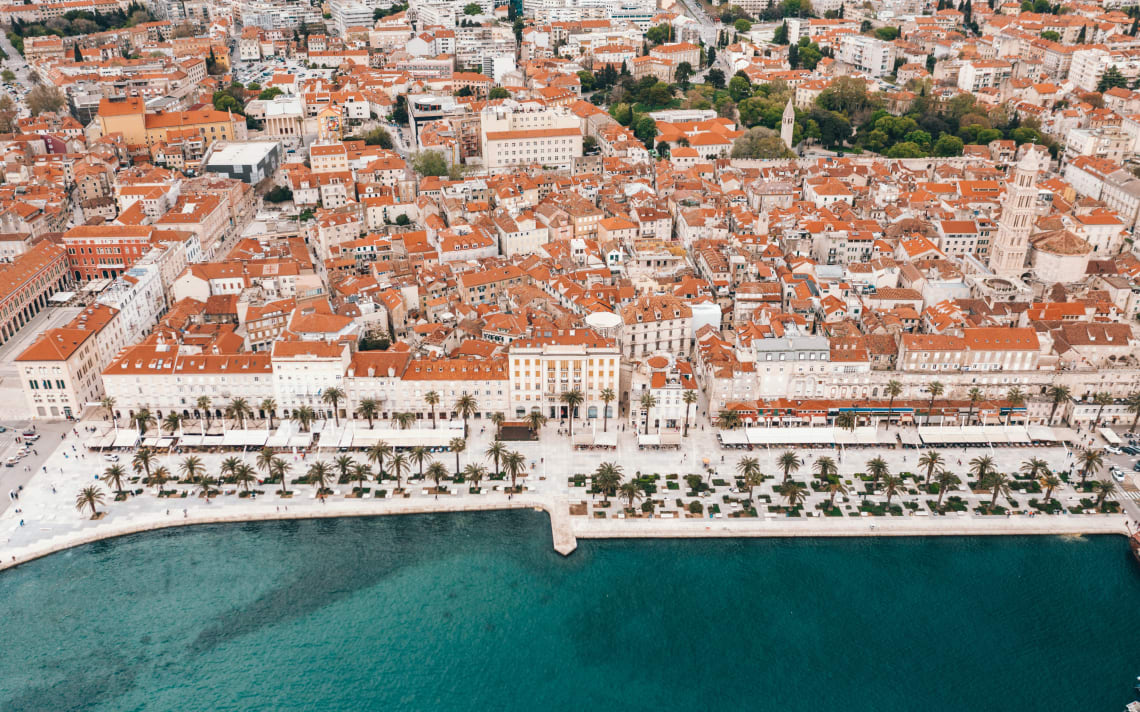
Zadar
Last but not least, a popular destination for backpacking Croatia is Zadar. This charming coastal town is on the central Dalmatian Coast, north of Split and Dubrovnik. It features fascinating attractions like the Sea Organ - an art installation that creates music from ocean.
Less hectic and expensive than Dubrovnik and Hvar, Zadar is also an excellent base for exploring nearby national parks such as Krka National Park.
Take a look at the volunteer programs in Zadar.
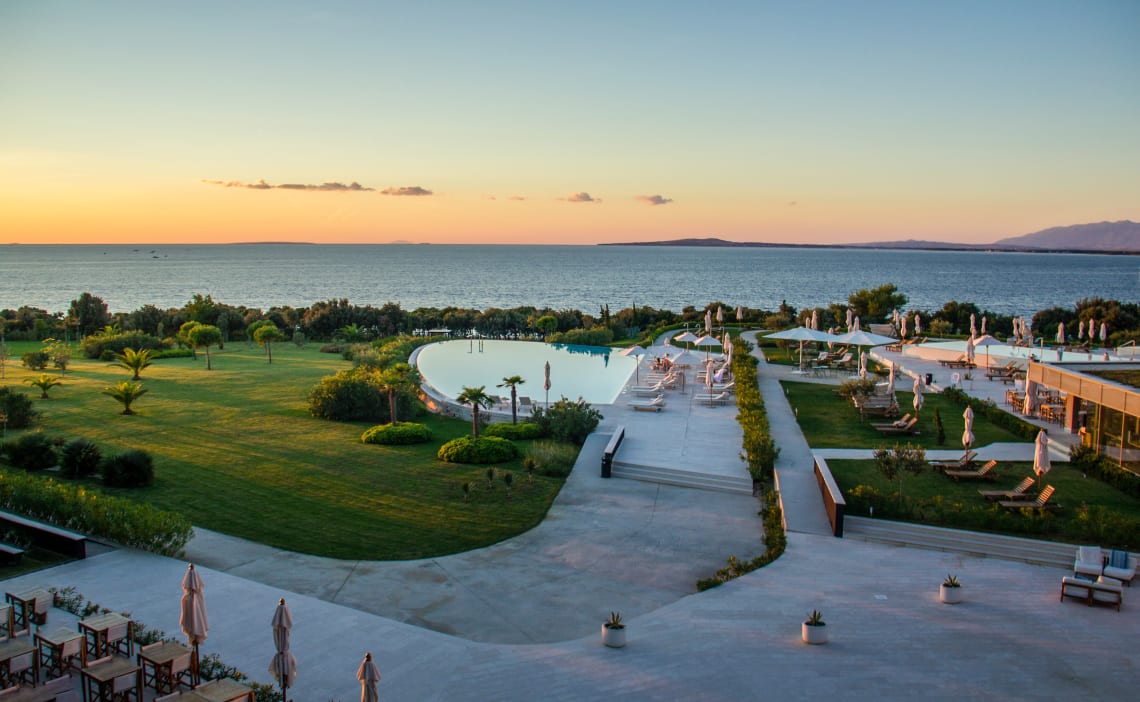
Island-hopping in Croatia
While backpacking Croatia, try not to spend your whole time inland. If you can, plan some island hopping, which is one of the best parts of the Croatian experience.
Among the most popular islands in Croatia, besides Hvar, are Brac, Krk, Cres and Losini. If you want to get off the beaten path, consider visiting Vis, Silba and Lastovo.
10-Day backpacking itinerary for Croatia
Want help planning your itinerary? Here’s a suggestion for a 10-day trip. I strongly suggest spending more time to see stuff in less of a hurry and get off the beaten path, but this is a good start:
Day 1: Arrive in Zagreb and explore the city's landmarks and museums.
Day 2: Visit Plitvice Lakes National Park.
Days 3-4-5: Travel to Split, visit Diocletian's Palace and spend a day in Trogir.
Days 6-7: Head to Hvar Island and enjoy its beaches and nightlife.
Days 8-9: Visit Dubrovnik, explore the Old Town and spend a day in Mljet.
Day 10: Return to Zagreb and depart.
If you have more time, I strongly suggest volunteering somewhere less touristy. There are some great work exchange opportunities in small Croatian towns.
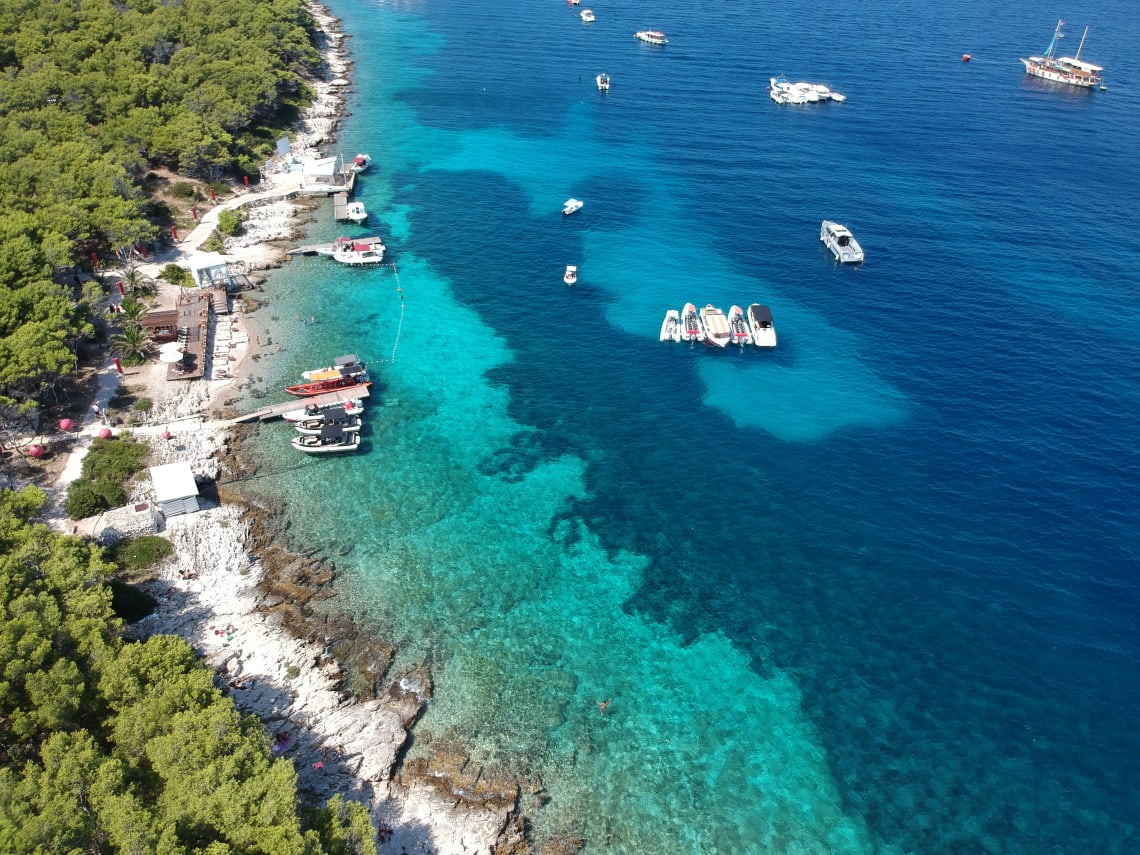
Frequent questions about Backpacking Croatia
Is Croatia a good place to backpack?
Yes, Croatia is an excellent destination for backpackers. With its stunning coastline, historic cities, beautiful national parks, and affordable prices, it offers diverse experiences for travelers on a budget. Moreover, the country has well-developed infrastructure and transportation options that make it easy to be explored.
Is it expensive to backpack in Croatia?
Croatia can be relatively affordable for backpackers compared to other European destinations. By staying in hostels or doing work exchanges, eating at local markets or street food vendors, and using public transport you can travel around Croatia on a budget without missing out on its wonders.
How long does it take to backpack in Croatia?
That depends on your interests and the amount of time you have available for the trip. If you only have a few days, I suggest combining one city and one national park or island. If possible, try to spend at least 10 days, so you can visit main destinations such as Dubrovnik, Plitvice Lakes National Park and Hvar Island along with some off-the-beaten-path locations.
What is the best month to visit Croatia?
The best months for visiting Croatia are May through June and September through October, when the weather is pleasant but not too hot, and the most popular sites aren’t too crowded. At peak tourist season (July-August), famous locations such as Dubrovnik’s old town will be super full, and accommodation will be more expensive. Late May and early September are ideal.
Are you ready for your trip to Croatia?
Backpacking in Croatia is super fun. From the stunning Plitvice Lakes National Park to Dubrovnik's picturesque old town, there are plenty of amazing destinations to explore during your time here.
And if you want to save money and have the experience of a lifetime, join Worldpackers! You can exchange your skills for accommodation and other benefits while making meaningful connections with locals and other backpackers.












Vohobjon
May 12, 2023
hello good
Mokhira
May 22, 2023
I wanted to travel here❤️
Juliano
May 27, 2023
Luisa, quanto em média você gastou nessa viagem?
Mark
Jul 07, 2023
Very helpful information. Croatia is the next trip I want to take with my two sons in Spring 2024.
Silm
Aug 05, 2023
The first thing